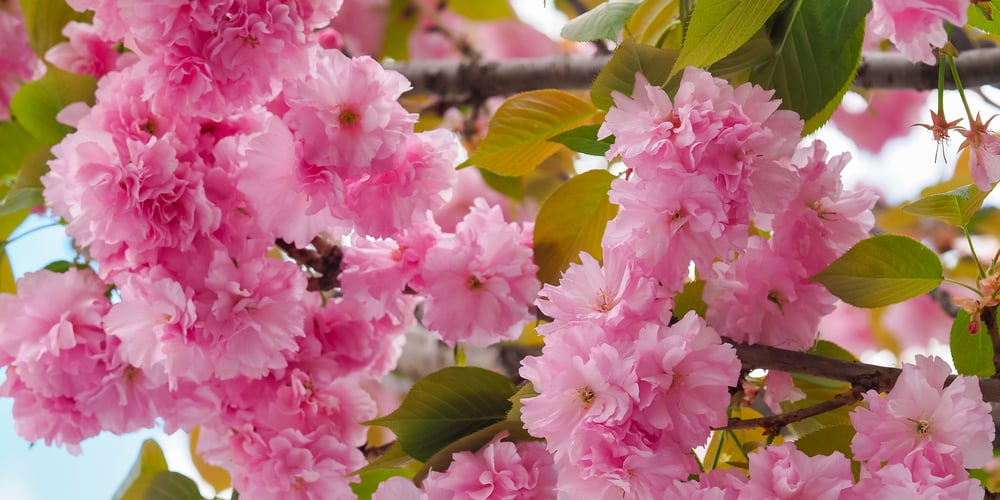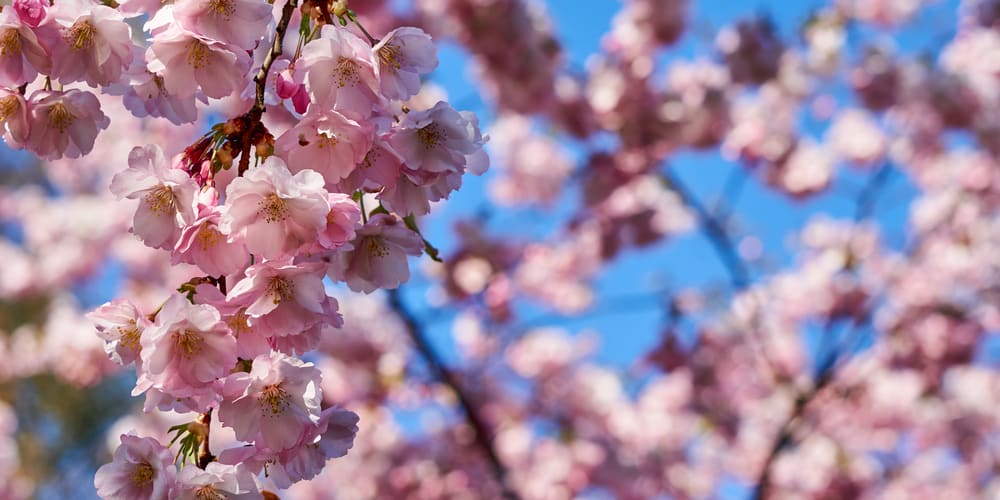Who doesn’t love cherry blossom trees? These gorgeous plants symbolize spring and will add an elegant touch to any location. You can expect them to release an attractive scent that will make spending time outdoors even more pleasant during the blooming season.
But did you know that there are several varieties of cherry trees? While there isn’t a “better” species, you may want to know about the differences and similarities of some of them. Indeed, such information might help you decide which one you should plant in your yard.
In this “Yoshino vs. Kwanzan Cherry Tree essential guide,” we’ll go through everything you need to know about these two plant varieties. Ideally, after reading this article, you’ll have a better idea about which one works better for your garden. So, are you ready to start?
Kwanzan vs Yoshino Cherry Trees

If you were to identify these varieties by looking at them, you should look at their flowers. Indeed, the easiest way to distinguish a Kwanzan cherry tree from a Yoshino is to look at the colors and structure of their blooms.
For instance, the Kwanzan cherry tree displays bright pink flowers with several layered petals. You can expect most flowers to have at least three petal rows. Because of this, they look different than your classic cherry tree blossoms. On the other hand, Yoshino cherry trees produce traditional white and pink flowers with five petals. But that doesn’t make them less gorgeous!
Indeed, the two trees are excellent options, especially if you live in USDA hardiness zones between 5 and 9. But let’s dig deeper into the similarities and differences of these plants!
Yoshino Vs Kwanzan Cherry Trees: Similarities

Yoshino and Kwanzan cherry trees have (as you may expect) plenty of similarities. For instance, both are fast growers who will reach heights between 30 and 40 feet at maturity. Also, the two trees prefer growing under the full sun or in partial shade.
They thrive in most soil conditions, better at neutral pH levels. Additionally, the two need similar care to grow healthy. Once established, you may have to water your plant less frequently. However, you’ll still have to keep an eye on pests and diseases which can attack your tree.
To prevent this from harming your cherry tree, you must keep it under the ideal growing conditions. After all, a healthy tree has fewer chances of getting sick and not recovering from it. With that said, these trees also have several differences that make them apart.
Jump to the following section to learn more about them!
Yoshino Vs. Kwanzan Cherry Trees: Differences
Of course, besides the color and shape of their flowers, these two cherry tree varieties have other differences.
Kwanzan usually blooms later than Yoshino. Of course, this depends on your local climate and the growing conditions. However, usually, Kwanzan blooms in April, while Yoshino starts displaying flowers in March.
If you are looking for a tidy plant, avoid getting a Kwanzan: this variety sheds its petals in several days, meaning you won’t be able to get rid of the problem with a single cleaning session. Instead, you’ll have to constantly remove petals to prevent them from creating “paste” layers that are usually very challenging to clean. And the aesthetic effect might not be the best. Additionally, because the flowers are large, they take more to decompose.
On the other hand, Yoshino will shed most of its flowers in a few days. While you might see a layer of petals after the blooming season, you can clean it relatively quickly. However, under ideal conditions, Yoshino might get bigger at maturity. And while that might not be a problem for most gardeners, you should know about this if you have limited space in your yard.
Also, Kwanzan tends to have higher diseases and attacks from pests resistance. Plus, it better tolerates different climates, making it a more versatile choice.
The Bottom Line
Saying that one cherry tree is better than the other is impossible. After all, the two are stunning plants that will make your garden prettier. However, you should know about their characteristics.
For instance, you now know that you may have to struggle more with a Kwanzan cherry tree because it usually becomes messy after flowering. And if you don’t have much space in your garden, you may be better off planting a Yoshino.
The two species also look slightly different. But of course, choosing a variety for your garden depends on your taste and requirements!